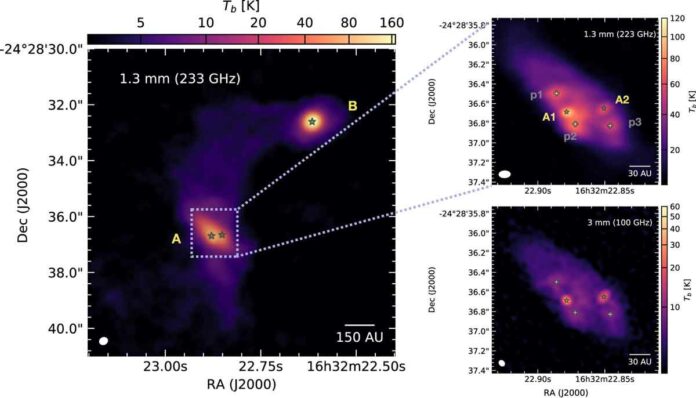A team of researchers from the Max Planck Institute for Extraterrestrial Physics discovered evidence of ripe conditions for planet formation in the vicinity of two closely orbiting protostars. They have collaborated with colleagues from the University of Texas at Austin and Green Bank Observatory in West Virginia for this study.
The group describes their observations in a paper published in The Astrophysical Journal Letters. They also hoped to learn from future research on the star system.
The team’s work on this new effort followed the discovery of a pair of protostars in their very early stages of development. These protostars are in their first 500,000 years of existence. The researchers have taken a closer look at the two protostars as well as the environment in which they exist.
The two protostars are currently known as IRAS 16293-2422 A. They are surrounded by a dense cloud of dust. They are also orbiting a common point of gravity. Researchers studied the protostars known as A1 and A2 and they discovered that they orbit each other very closely. They are only 54 au apart. They also noticed that the two stars are stirring up the dust around them. The stars have at least three hot spots.
The hot spots are caused by shock waves sent into the dust cloud. Because A1 and A2 draw in some material to help them grow and expel other material that does not mesh well with the ingredients already present. Researchers observed that such shock waves cause dust and gas compression. It leads to heating. They pointed out that it can lead to molecules being squeezed closer together. It can eventually result in the formation of more complex molecules. When they combine with the dust around them, they can form rocks that grow larger over time. Planets will eventually form around the stars as they mature.
Some molecules in the hot spots have already formed into isocyanic acid. Isocyanic acid is composed of carbon, oxygen, hydrogen, and nitrogen. These are the basic building blocks of organic molecules.

